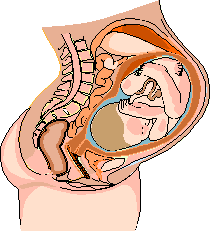Abortion - What is Legal in the U.S. and Why?

It is important that the reader understand the current legal status of abortion in America. There seems to be a widespread perception that the Supreme Court decision Roe v. Wade (1973) only permits abortions up to 24 weeks, and after that time only to save the life of the mother. This false perception—fueled in large part by groups supporting abortion rights—is uncritically accepted by the media.
The fact is that the current law does not restrict a woman from getting an abortion for practically any reason she deems fit during the entire nine months of pregnancy. In order to understand why this is the case, a brief history lesson is in order.
In Roe, Justice Harry Blackmun divided pregnancy into three trimesters.

First and Second 3 Months
He ruled that aside from normal procedural guidelines (e.g., an abortion must be safely performed by a licensed physician), a state has no right to restrict abortion in the first six months of pregnancy. Thus a woman could have an abortion during the first two trimesters for any reason she deemed fit, whether it be an unplanned pregnancy, gender selection, convenience, or rape.
Last 3 months
In the last trimester the state has a right, although not an obligation, to restrict abortions to only those cases in which the mother's health is jeopardized.
In sum, Roe v. Wade does not prevent a state from allowing unrestricted abortion for the entire nine months of pregnancy if it so chooses.
Like many other states, the state of Nevada has chosen to restrict abortion in the last trimester by only permitting abortions if "there is a substantial risk that the continuance of the pregnancy would endanger the life of the patient or would gravely impair the physical or mental health of the patient."[1]
But this restriction is a restriction in name only. For the Supreme Court so broadly defined “health” in Roe's companion decision, Doe v. Bolton (1973), that for all intents and purposes the current law in every state except Missouri and Pennsylvania (where the restrictions allowed by Webster have been enacted into law) allows for abortion on demand.
In Bolton the court ruled that “health” must be taken in its broadest possible medical context, and must be defined "in light of all factors—physical, emotional, psychological, familial, and the woman's age—relevant to the well being of the patient. All these factors relate to health."[2]
Since all pregnancies have consequences for a woman's emotional and family situation, the court's health provision has the practical effect of legalizing abortion up until the time of birth—if a woman can convince her physician that she needs the abortion to preserve her “emotional health.”
This is why the Senate Judiciary Committee, after much critical evaluation of the current law in light of the court's opinions, concluded that “no significant legal barriers of any kind whatsoever exist today in the United States for a woman to obtain an abortion for any reason during any stage of her pregnancy.”[3]
A number of legal scholars have come to the same conclusion, offering comments and observations such as the following:
In actual effect, Roe v. Wade judicially created abortion on demand in the United States.[4]
The concept of “health,” as defined by the Supreme Court in Doe v. Bolton, includes all medical, psychological, social, familial, and economic factors which might potentially inspire a decision to procure an abortion. As such, “health” abortion is indistinguishable from elective abortion. Thus, until a more narrow definition of “health” is obtained, it may not be possible to limit effectively the number of abortions performed.[5]
After viability the mother's life or health (which presumably is to be defined very broadly indeed, so as to include what many might regard as the mother's convenience…) must, as a matter of constitutional law, take precedence over…the fetus's life…[6] (emphasis in original).

It is safe to say, therefore, that in the first six months of pregnancy a woman can have an abortion for no reason, but in the last three months she can have it for any reason. This is abortion-on-demand.
Those who defend abortion rights do not deny this disturbing fact.
References
- Nevada Revised Statute, 442.250, subsection 3. [up]
- Doe v. Bolton 410 U.S. 179, 192 (1973). [up]
- Report, Committee on the Judiciary, U.S. Senate, on Senate Resolution 3, 98th Congress, 98-149, (7 June 1983), p. 6. [up]
- John Warwick Montgomery, “The Rights of Unborn Children,” Simon Greenleaf Law Review 5 (1985-86), p. 40. [up]
- Victor G. Rosenblum and Thomas J. Marzen, "Strategies for Reversing Roe v. Wade through the Courts," in Abortion and the Constitution: Reversing Roe v. Wade through the Courts, editors Dennis Horan, Edward R. Grant, and Paige C. Cunningham (Washington, D.C.: Georgetown University Press, 1987), pp. 199-200. [up]
- John Hart Ely, "The Wages of Crying Wolf: A comment on Roe v. Wade," Yale Law Journal 82 (1973), p. 921. [up]
Author: Francis J. Beckwith. Adapted from a series in Christian Research Journal, Spring 1991. Provided with permission by Summit Ministries and the author.
Copyright © 1995, 1998, Christian Research Institute, 1991, 1998, All Rights Reserved—except as noted on attached “Usage and Copyright” page that grants ChristianAnswers.Net users generous rights for putting this page to work in their homes, personal witnessing, churches and schools.
For further reading on abortion issues
- Francis J. Beckwith, Politically Correct Death: Answering the Arguments for Abortion Rights (Grand Rapids, Michigan: Baker Book House, 1993).
- Francis J. Beckwith, Abortion and the Sanctity of Human Life (Joplin, Missouri: College Press, 2000).
- Stephen Schwarz, The Moral Question of Abortion (Loyola University Press, 1990).
- Randy Alcorn, Prolife Answers to Prochoice Arguments (Sisters, Oregon: Multnomah Press, 2000).
